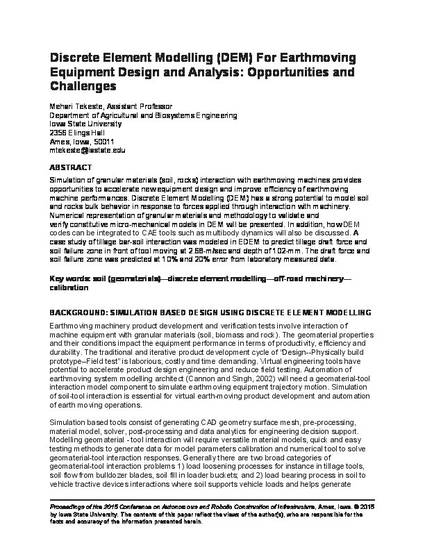
Simulation of granular materials (soil, rocks) interaction with earthmoving machines provides opportunities to accelerate new equipment design and improve efficiency of earthmoving machine performances. Discrete Element Modelling (DEM) has a strong potential to model soil and rocks bulk behavior in response to forces applied through interaction with machinery. Numerical representation of granular materials and methodology to validate and verify constitutive micro-mechanical models in DEM will be presented. In addition, how DEM codes can be integrated to CAE tools such as multibody dynamics will also be discussed. A case study of tillage bar-soil interaction was modeled in EDEM to predict tillage draft force and soil failure zone in front of tool moving at 2.68-m/sec and depth of 102-mm. The draft force and soil failure zone was predicted at 10% and 20% error from laboratory measured data.
Available at: http://works.bepress.com/mehari-tekeste/14/

This is a paper from Proceedings of the 2015 Conference on Autonomous and Robotic Construction of Infrastructure, which can be found in full at: http://lib.dr.iastate.edu/intrans_reports/141/.